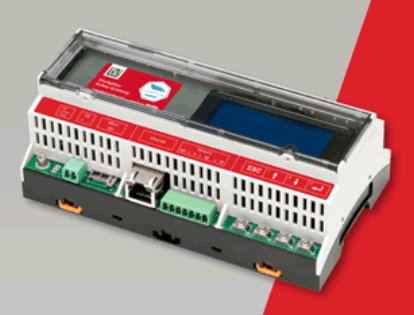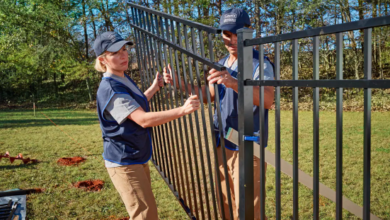SolarEdge Firefighter Gateway

The SolarEdge Firefighter Gateway as shown here on the Solen Energy website is a crucial safety device for photovoltaic systems, providing centralized control to immediately halt power production in emergency situations. As reported by Off Grid Renewables, this innovative technology utilizes SafeDC™ to automatically reduce string voltage to safe levels, enhancing the safety of firefighters and emergency responders during critical incidents.
SafeDC™ Voltage Reduction Technology
SafeDC™ is SolarEdge’s proprietary safety technology designed to minimize electrocution risks in photovoltaic systems. This innovative feature automatically reduces the DC voltage to a touch-safe level of 1V per module when the inverter or AC power is shut down. Key aspects of SafeDC™ include:
- Automatic activation during system installation, maintenance, or emergencies
- Compliance with international safety standards, including IEC/EN 60947-1 and -3, VDE AR 2100-712, and OEVE R-11-1
- Integration with SolarEdge power optimizers, eliminating the need for additional safety hardware
- Real-time monitoring capabilities to detect potential faults and safety risks
This technology not only enhances the safety of personnel working on or around PV systems but also provides peace of mind for property owners and first responders during emergencies.
Manual and Automatic DC Shutdown
The SolarEdge Firefighter Gateway offers both manual and automatic DC shutdown capabilities, enhancing safety in emergency situations. Manual shutdown can be initiated via an emergency stop button, allowing firefighters or authorized personnel to immediately halt the PV system’s production. For automatic shutdown, the gateway integrates with fire alarm control panels, triggering system deactivation when an alarm is detected. This dual-mode functionality ensures rapid response in various scenarios:
- Manual mode for non-emergency situations and controlled shutdowns
- Automatic mode for swift reaction to fire alarms without human intervention
- Real-time system voltage indication for safety assurance
- Notification to the SolarEdge Monitoring Platform upon system shutdown
These features work in conjunction with SafeDC™ technology to reduce string voltage to safe levels, providing comprehensive protection for emergency responders and maintenance personnel.
Integration with Fire Alarm Systems
Seamlessly integrates with existing fire alarm control panels, enhancing the overall safety of PV installations. This integration allows for automatic system shutdown when the fire alarm is triggered, without requiring external interaction. The gateway can be connected to fire alarm control units equipped with a relay, enabling swift response to potential fire hazards. Key features of this integration include:
- Compatibility with various fire alarm control systems, including those with grounded switches
- Automatic activation of SafeDC™ technology upon fire alarm triggering
- Real-time alerts sent to the SolarEdge Monitoring Platform when shutdown occurs
- Compliance with insurance requirements and support for emergency services
This integration ensures that the PV system responds rapidly to fire emergencies, providing an additional layer of safety for both occupants and first responders.
Benefits and Limitations
Associated SafeDC™ technology offer significant advantages for PV system safety, but they also come with some considerations. Here’s a balanced overview of the pros and cons:
Pros:
- Enhanced safety: Reduces DC voltage to touch-safe levels during emergencies or maintenance
- Dual shutdown modes: Offers both manual and automatic shutdown options for flexibility
- Real-time monitoring: Provides instant visibility into system status and voltage levels
- Integration with fire alarms: Automatically triggers shutdown when connected to fire alarm systems
- Compliance: Meets various safety standards and insurance requirements
- Improved firefighter safety: Allows emergency responders to work more safely around PV systems
Cons:
- Increased complexity: Adds additional components to the PV system, potentially increasing points of failure
- Higher initial cost: The gateway and optimizers increase the upfront investment compared to standard string inverter systems
- Installation time: Requires more time to install compared to traditional systems due to additional components
- Maintenance considerations: May require specialized knowledge for troubleshooting and repairs
- System-specific: Only compatible with SolarEdge inverters and optimizers, limiting flexibility in system design
- Potential for longer downtime: In case of component failure, warranty replacements may lead to extended system inactivity
Compatibility with Battery Storage Systems
Solen Energy systems, including the Firefighter Gateway and SafeDC™ technology, are designed to integrate seamlessly with battery storage solutions, enhancing both safety and energy efficiency. This compatibility ensures that PV systems can store excess energy while maintaining high safety standards. Key aspects of this integration include:
- DC-Coupled Architecture: SolarEdge’s battery storage solutions, such as the Energy Bank 10kWh and Home Battery 400V, utilize DC-coupled technology to store photovoltaic power directly in the battery without AC conversion losses. This approach improves overall system efficiency by reducing energy loss during storage and retrieval.
- Safe Voltage Management: The SafeDC™ feature extends to battery storage systems, ensuring that the voltage is reduced to touch-safe levels during emergencies or maintenance. This safety measure is critical for systems that combine PV production with energy storage, as it minimizes risks associated with high voltage.
- Backup Capabilities: SolarEdge inverters, when paired with compatible batteries and the Backup Interface, provide backup power during grid outages. This functionality ensures uninterrupted energy supply while maintaining system safety through integrated monitoring and shutdown features.
- Monitoring and Control: SolarEdge’s monitoring platform offers complete visibility into PV production, battery status, and self-consumption data. This centralized control allows users to optimize energy usage while ensuring the system operates safely and efficiently.
- Flexible Installation Options: SolarEdge batteries support various configurations, including single-phase and three-phase systems, making them suitable for diverse residential and commercial applications. They are also compatible with SolarEdge inverters and optimizers for a streamlined setup.
- Compliance with Safety Standards: SolarEdge batteries meet advanced safety certifications such as IEC 62619, IEC 63056, and UL9540A. These standards ensure safe operation in residential environments while mitigating risks like overheating or electrical faults.
Read also: The Rise of Sustainable Design in Commercial Renovations: Why It Matters Now More Than Ever
Rapid Shutdown Compliance Standards
Rapid Shutdown Compliance Standards are critical safety requirements for solar photovoltaic (PV) systems. These standards aim to protect firefighters and first responders by ensuring quick de-energization of PV systems during emergencies. Key aspects of rapid shutdown compliance include:
National Electrical Code (NEC) Requirements:
- NEC 690.12 standard mandates rapid shutdown for all solar systems installed on buildings
- Applies to conductors more than 1.5 meters inside a building or 3 meters from the solar array
- System voltage must drop below 30 volts and power limited to under 240 VA within 10 seconds of activation
Voltage and Power Measurement:
- Measured between any two conductors and between conductors and ground
- Ensures minimal electrical hazard for emergency responders
Labeling and Certification:
- RSD devices must be properly labeled according to NEC guidelines
- Devices must be certified and listed for use in PV systems
Compliance Variations:
- Requirements may differ between NEC 2014 and NEC 2017 versions
- Some jurisdictions may have additional or modified requirements
Installation and Testing:
- Proper installation and regular testing of RSD systems are crucial for compliance
- Installers must ensure compatibility with existing fire alarm systems and emergency protocols
Market Impact:
- Compliance with RSD standards is often mandatory for system approval and connection to utilities
- Has driven innovation in module-level power electronics and inverter technologies
International Standards:
- While NEC is prominent in North America, other regions may have similar safety standards
- Manufacturers often design products to meet multiple international requirements
Rapid shutdown compliance is an evolving field, with standards regularly updated to improve safety and accommodate new technologies in the solar industry.




